
Don Valley gondola could lift Toronto tourism
A gondola is being floated as a means of connecting tourists and Torontonians with Evergreen Brick Works and the city’s ravine trails.
thestar.com
Feb. 19, 2016
By Tess Kalinowski
Imagine soaring high above the riotous autumn colours of the Don Valley aboard a comfortable cable car that would connect the bustle of Danforth Ave. with the natural surroundings of Evergreen Brick Works on Bayview Ave.
That is the $20- to $25-million proposal for Toronto’s first gondola being floated by a private company called Bullwheel International Cable Car Corp.
Envisioned as a major tourist attraction, the Don Valley cable car could be up and running in three or four years, although that is an aggressive timeline, admits the company’s CEO. It would be built and operated without public money.
“(Gondolas) are proven technology. Our technical director is a third generation ropeway technician who’s built systems all over the world. He commissioned 10 of the lifts for the Sochi Olympics,” said CEO Steven Dale.
The gondola still needs to meet rigorous public and civic approvals, but Mayor John Tory said it could fit with his agenda “to move people any way we can.” He called the concept “exciting” and “novel.”
“I don’t know why we’d reject any means of getting people around,” he said.
Gondolas are mostly associated with ski hills, but increasingly they are being integrated into urban landscapes, said Tory.
“We’re trying to come to grips with what kinds of ways we can provide people greater access to the ravines without being too obtrusive...The concept of a cable car that goes through some land that is beautiful and scenic is very appealing,” said the mayor.
Bullwheel hasn’t applied for any city approvals yet. It wants to put the plan before a public information meeting on March 8 at Estonian House at 958 Broadview Ave.
“That will determine if and how the project moves forward,” said Dale, who divides his time between Toronto and Switzerland.
He calls the gondola “recreational infrastructure” similar to the Toronto Island ferries. A round-trip ride would cost about $10 on average. Tourists will pay more than locals, and there would be annual and family passes.
“This is the way it happens all over the world. Locals pay less than tourists,” he said.
“For us it is a wonderful evolution of an innovation. It gives another interesting, unique way to get here,” said Evergreen Brick Works director Manissa Patel.
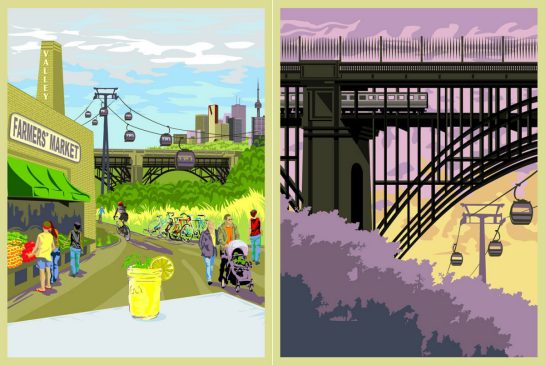 ,
,
Brick Works, an environmental community centre, attracts up to 3,000 visitors a day on a busy weekend to its farmer’s market, skating rink, cafe and connecting ravine trails. Many of the 500,000 annual visitors come by car. There is a shuttle bus from Broadview station, a service that costs the registered charity $20,000 a month and ensures tenants, visitors and staff can connect to the TTC.
Evergreen doesn’t charge admission. It depends on revenue from its market vendors, tenants and garden centre.
“We’re hoping for an audience and more exposure,” said Patel. “While we have no financial benefit from (the gondola), it’s one of the first times someone has approached Evergreen with an idea that doesn’t require fundraising.”
It would take only about eight minutes via gondola to make the 1 km trip down the Don Valley. A heated, fully-accessible cabin, complete with bike rack, would take off about every 15 to 30 seconds from two stations - one at Playter Gardens near the Broadview subway station and another at the west parking lot of the Brick Works.
Each of about 40 cabins would accommodate up to eight people. It would be capable of travelling up to five metres per second for a four-minute trip. But most of the time, the gondola would move at only half speed “so people have more of a recreational experience,” said Dale.
Bullwheel is estimating about 225,000 to 515,000 people a year would ride the gondola. During weekend peaks, there could be up to 1,500 riders a day.
“While a cabin could fit eight people, we know a family of four is largely going to want their own cabin and they’ll wait for the next cabin,” said Dale.
“Except for very rare events like Taste of the Danforth, the reality is the system will always be running at under maximum capacity, and that’s intentional and very common in the cable car industry.”
The cable car infrastructure would be minimal. Three cables would be strung between three to six towers. The highest would rise about 50 metres from the valley floor and wouldn’t be visible from Danforth Ave.
“The station will be cantilevered off the edge of Playter Gardens so we won’t claim any of the park area. We don’t go over a single residential property. There are no residential privacy concerns we can see,” said Dale.
Although the gondola is being conceived as a tourism draw, it would be a practical transportation option for residents to access the ravines, said Councillor Mary Fragedakis (Toronto Danforth), who put a motion before Economic Development Committee in April.
“We need a way to get in and out of the ravines. There are lots of exciting things, but you’ve got to get people down there,” said Fragedakis.
An uplifting idea
Cable cars are not the first thing that comes to mind when considering public transit, but they’re an increasingly popular choice around the world.
Spokane, Wash.

Adults pay $7.50 for a 15-minute ride in a weatherproof cabin across the Spokane River. The trip offers views of waterfalls, a nature park, the historic Monroe Street bridge and the art deco city hall.
Cape Town, South Africa
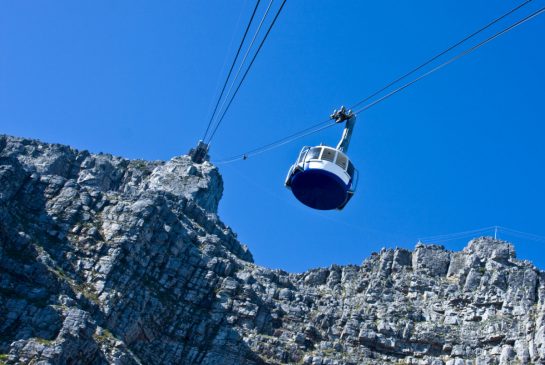
The Table Mountain Cableway uses high-tech rotating gondolas to show off views of Cape Town and Robben Island. But online reviews warn that strong wind occasionally brings service to a stop. The trip takes about five minutes and costs about $21.
Porto, Portugal
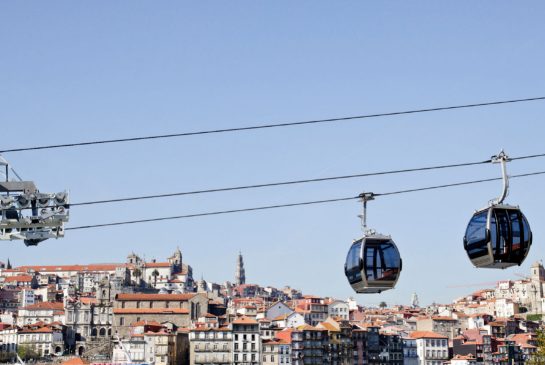
Less than a kilometre long with two stations, the Teleférico de Gaia opened five years ago. It has three towers and travels about three to five minutes overlooking the Porto’s orange rooftops, the city’s cathedral and the Douro River for about $8.
Grenoble, France
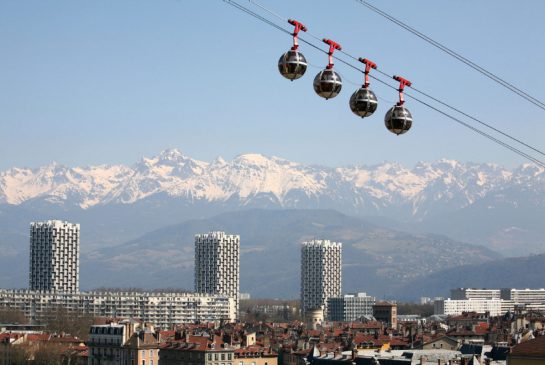
This gondola, which bills itself as the first urban cable car, has been in service since 1934. The cabins, called eggs or bubbles carry up to six passengers. According to its website, the system carries up to 325,000 visitors a year to the Bastille, a fort built into the side of a mountain. A round trip costs about $12.
Pearson airport
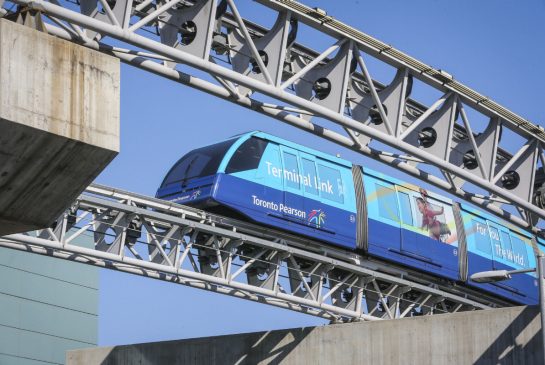
It’s not an aerial gondola, but Pearson airport’s people mover, called the Link Train, is actually a cableway operating on a continuous loop of 36 mm hydraulic cable. It was built by Doppelmayr, the same technology provider being used in the Don Valley cable car proposal. The airport Link daily carries more than 17,000 airport workers and travellers between terminals and parking.
